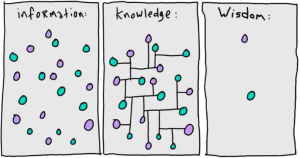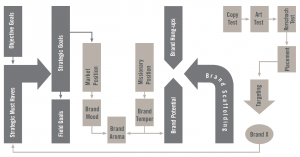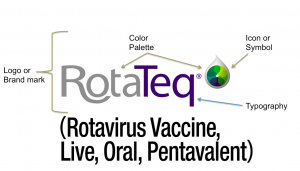Searching the web one might think that the entire healthcare marketing and communications industry is well qualified to comprehensively brand your company, product or service. Google the terms “healthcare branding services” or “healthcare branding strategies,” and you get pages and pages of what appear to be an astonishing variety of likely candidates. The fact of the matter is that only a healthcare branding agency—one specializing in healthcare brand identities—can fulfill all that’s required to launch or re-launch your brand. Here are five healthcare branding services your brand can’t do without:
- Healthcare branding research: Most marketing research does not deliver the insights needed to craft a branding strategy. Branding is the art and discipline of taking the aspirational values that customers esteem about themselves and transferring them to a company, product or service in such a way that they see a flattering self-reflection in them. Ironically, most market research asks questions not about the customer, but rather about the brand. What do you think about the brand? How often would you use it? When is it most useful to you? And so on.
 Such a line of inquiry ignores what branding is all about: the “why” behind an engagement between a customer and a brand. And these answers aren’t achieved by direct questioning. When asked “why do you like this brand,” one gets pat answers like, “its’ easy to live with” or “ it really works” or “it doesn’t take away one problem while giving me another”—all answer STILL about the brand and not the customers. Effective healthcare branding uses interactive exercises designed by behavioral psychologists to get deeper into such issues as how customers live, how they feel about themselves and what they fear most or hope for most. Notice that none of these questions have to do about the brand. By discovering the answers to issues like these, brands can craft a strategy that gets at the heart of why customers flock to your brand.
Such a line of inquiry ignores what branding is all about: the “why” behind an engagement between a customer and a brand. And these answers aren’t achieved by direct questioning. When asked “why do you like this brand,” one gets pat answers like, “its’ easy to live with” or “ it really works” or “it doesn’t take away one problem while giving me another”—all answer STILL about the brand and not the customers. Effective healthcare branding uses interactive exercises designed by behavioral psychologists to get deeper into such issues as how customers live, how they feel about themselves and what they fear most or hope for most. Notice that none of these questions have to do about the brand. By discovering the answers to issues like these, brands can craft a strategy that gets at the heart of why customers flock to your brand. - Healthcare branding strategies: If you follow the conventional research methodologies outlined above, your strategy will inevitably be about one of the three most common market positions: the convenient one, the effective one, or the safer one. Exciting, right? Yet this is what most healthcare marketing clients accept as proper branding strategies. Again, where’s the customer in all of this? With the right customer audience insights, branding strategies can achieve a level of engagement only found by healthcare branding identity firms.
 Further, the strategy shouldn’t have so many moving parts that it becomes a complex mess without a clear direction: brand values, brand essence, brand focus, brand character, brand anything—it can perpetuate a confusion that extends from the brand team right to the customers! A branding strategy—one directed at creating a brand identity (and not the host of promotional and educational tactics invariably put forward by healthcare ad agencies)—has only two parts: 1) A Brand Promise – a unique and brief statement about why the brand connects with customers; and 2) A Brand Personality – three-to-five descriptive traits that characterize the tone and attitude with which the brand delivers the personality. That’s it. With such a laser focus, your brand stands the best chance of engaging customers on a very deep level.
Further, the strategy shouldn’t have so many moving parts that it becomes a complex mess without a clear direction: brand values, brand essence, brand focus, brand character, brand anything—it can perpetuate a confusion that extends from the brand team right to the customers! A branding strategy—one directed at creating a brand identity (and not the host of promotional and educational tactics invariably put forward by healthcare ad agencies)—has only two parts: 1) A Brand Promise – a unique and brief statement about why the brand connects with customers; and 2) A Brand Personality – three-to-five descriptive traits that characterize the tone and attitude with which the brand delivers the personality. That’s it. With such a laser focus, your brand stands the best chance of engaging customers on a very deep level. - The healthcare Brandscape: Before pen is put to paper (or stylus to a computer screen) when contemplating your branding hallmarks, your agency should not make a move until they have shown you how your competition is attempting to own mind-shares of your potential customers. Like you, your competition is engaged in trying to distinguish themselves using the same protocols as you. Unraveling this dynamic is essential to forging a brand that is ownable and sustainable. A Brandscape™ Analysis is needed to discern not only the reasons that your competition puts forth it’s branding hallmarks (color, typography, iconography and secondary visual assets), but also the strategy that informs their selection. The Brandscape Analysis should evaluate 1) the brands that directly compete with you, 2) brands in related categories that compete for your customers’ attention, and 3) brands in your own portfolio (depending on the branding strategy, you might actually want a portfolio look and feel). So for the hyperlipidemia market, say, you would review no less than four brands of statins, fibrates and niacins; four representative brands in, say, hypertension, heart failure and angina; and then several brands in your own portfolio. If the agency you are trusting to build your brand identity is not giving you this vital point of view, you’ll have no idea if your brand identity truly differentiates itself from the competition.
- Branding Hallmarks: As stated above, we are talking about color, typography, iconography and secondary branding assets. The selection of these is not subjective, but rather should directly link to your branding strategy. Use your Brand Promise to guide icon development and secondary assets, and your Brand Personality traits to guide the primary assets of color and typography. Yes, it’s that prescribed. (I did say earlier that branding was an art, but also a discipline.)
 The most common mistake that healthcare advertising agencies make in logo development is over-design: having the logo behave like an ad, with too many elements competing for attention. A logo should be like a flag: simple enough to state the basics of the strategy; not so specific that it suggests a claim about your brand (the logo needs to work in concert with other visual assets and you don’t want the logo to work too hard to tell your story); and compact enough to insure practical applications in all media and sizes. Consumer logos can shout, but healthcare logos should imply and intimate. You want a flag not a movie.
The most common mistake that healthcare advertising agencies make in logo development is over-design: having the logo behave like an ad, with too many elements competing for attention. A logo should be like a flag: simple enough to state the basics of the strategy; not so specific that it suggests a claim about your brand (the logo needs to work in concert with other visual assets and you don’t want the logo to work too hard to tell your story); and compact enough to insure practical applications in all media and sizes. Consumer logos can shout, but healthcare logos should imply and intimate. You want a flag not a movie. - Brand Behavior: A brand isn’t just its visual reputation in the market. Far from it. The way a brand performs is much more important than how it looks, relatively speaking. If your brand personality is about being, say, bold, inspiring and hopeful, then your brand’s actions should follow. What does your convention presence look and feel like? Which events does your brand support? What is the brand experience like for customers in your online presence and other venues? Ad agencies usually focus their brand identity development not on the logo or brand behavior, but rather on…well, the ads. It’s what they get awards for so naturally they are disincentivized to develop your brand’s behaviors. A good brand book should be more than just a simple guideline about the visuals. It should also outline the strategy behind your brand, as well as its brand behavior
And for goodness sake, don’t put the launch ad campaign in your brand book. Long after the launch it won’t make sense any more. Ad campaigns are transitory; branding is forever. Secure these five essential healthcare branding services and you are on the best route to arrive at your brand’s best destiny.
